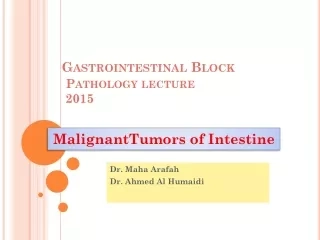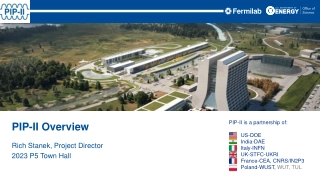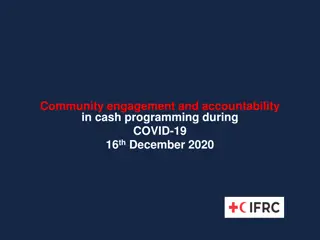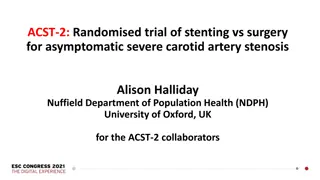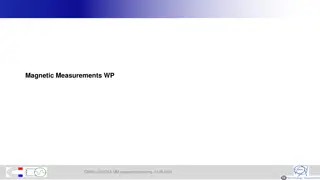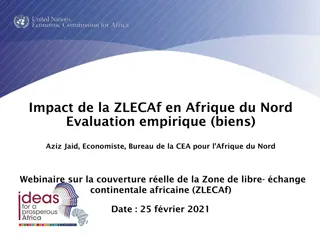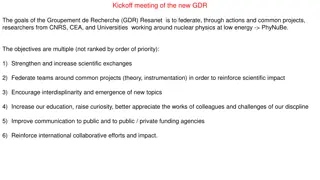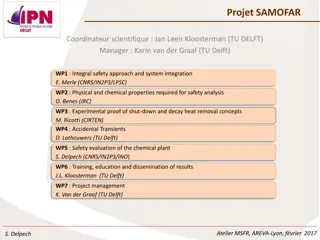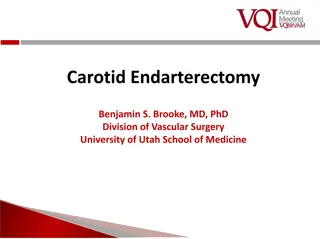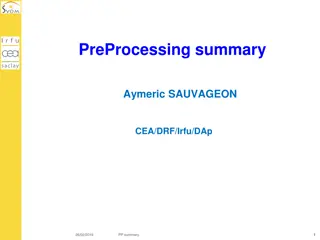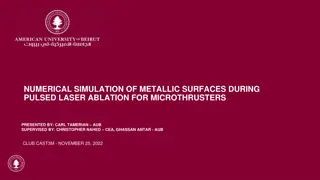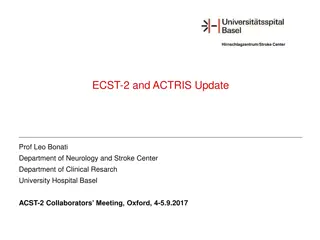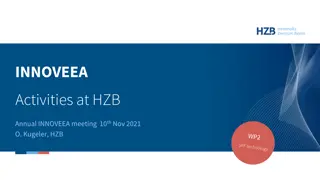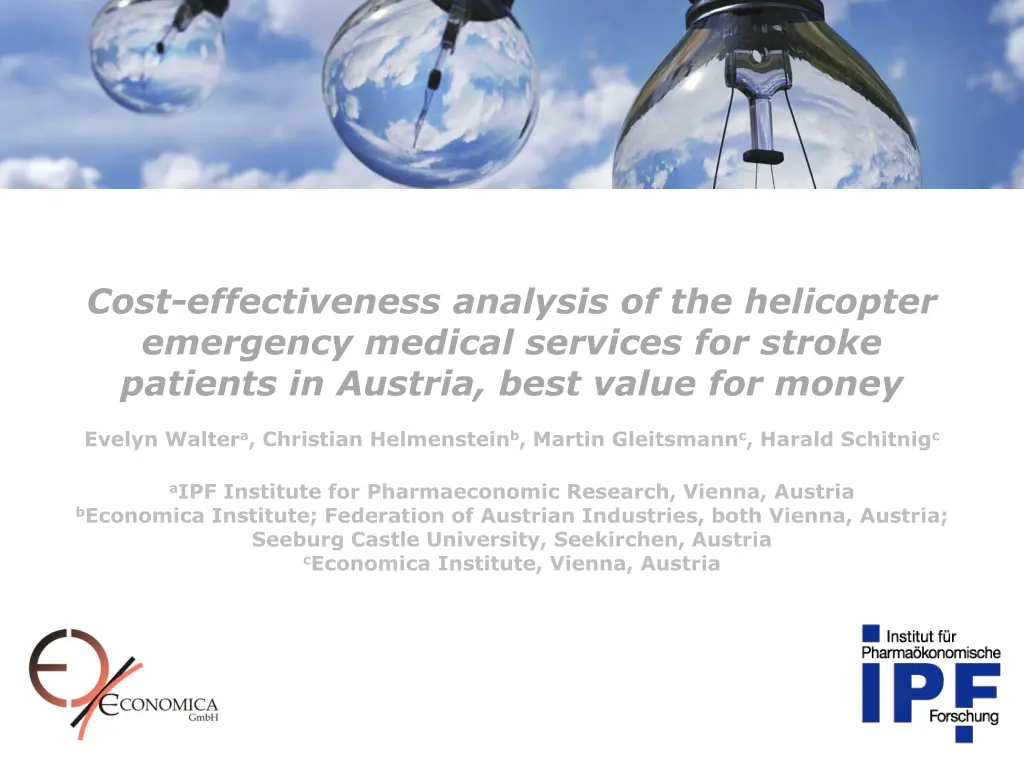
Cost-Effectiveness Analysis of Helicopter Emergency Medical Services for Stroke Patients in Austria
Explore the cost-effectiveness of helicopter emergency medical services (HEMS) for stroke patients in Austria compared to ground-based ambulance transport. The study evaluates resource allocation, medical costs, transportation costs, patient outcomes, and financial impact. The analysis aims to provide valuable insights for decision-makers in maximizing health benefits and optimizing resource utilization.
Download Presentation

Please find below an Image/Link to download the presentation.
The content on the website is provided AS IS for your information and personal use only. It may not be sold, licensed, or shared on other websites without obtaining consent from the author. If you encounter any issues during the download, it is possible that the publisher has removed the file from their server.
You are allowed to download the files provided on this website for personal or commercial use, subject to the condition that they are used lawfully. All files are the property of their respective owners.
The content on the website is provided AS IS for your information and personal use only. It may not be sold, licensed, or shared on other websites without obtaining consent from the author.
E N D
Presentation Transcript
Institut fr Pharma konomische I IP P F F Forschung Cost-effectiveness analysis of the helicopter emergency medical services for stroke patients in Austria, best value for money Evelyn Waltera, Christian Helmensteinb, Martin Gleitsmannc, Harald Schitnigc aIPF Institute for Pharmaeconomic Research, Vienna, Austria bEconomica Institute; Federation of Austrian Industries, both Vienna, Austria; Seeburg Castle University, Seekirchen, Austria cEconomica Institute, Vienna, Austria IEF LOHN.SICHER.SERVICE
CONFLICT OF INTEREST STATEMENT The authors have no financial relationships to disclose or conflicts of interest (COIs) to resolve relating to the lecture. IPF - Institut f r Pharma konomische Forschung IPF - Institut f r Pharma konomische Forschung 2 2
Background In general, health economic evaluation provide information to decision makers for efficient use of available resources for maximizing health benefits. From a health economics perspective, the economic assessment of helicopter emergency medical services (HEMS) is a highly interesting issue. The reasons are manifold: A time delay in hospital admission in acute events is associated with a high disease burden and subsequent costs: Burden of disease is defined as: premature death, morbidity and disability, as well as direct medical and nursing costs. The literature documented highly cost-effective results ranging from $3,292 to $2,227 per year of life gained for trauma patients and $3,258 per year of life gained for non-trauma patients ($7,138 and $12,022 per quality-adjusted year of life gained).1 Costs for transportation arise today but the benefit occurs in the future. 1Taylor CB, Stevenson M, Jan S, Middleton PM, Fitzharris M, Myburgh JA. A systematic review of the costs and benefits of helicopter emergency medical services. Injury. 2010 Jan;41(1):10-20. doi: 10.1016/j.injury.2009.09.030. PMID: 19853251. IPF - Institut f r Pharma konomische Forschung IPF - Institut f r Pharma konomische Forschung IPF - Institut f r Pharma konomische Forschung 3 3 3
Aim of the analysis The aim of this study was to evaluate the cost-effectiveness of a HEMS ( 90 Min) compared with ground-based ambulance-transport for patients with acute stroke to a stroke unit (SU). Determination of the resource allocation and medical costs including nursing costs as a clinical consequence of the stroke diagnosis Determination of transport costs Improvement of patient outcomes expressed in a better modified Ranking Scale (mRS) state, higher life-expectancy and higher quality adjusted life- years (QALYs). Financial impact as a result of a higher percentage of SU admissions carried out by HEMS IPF - Institut f r Pharma konomische Forschung IPF - Institut f r Pharma konomische Forschung IPF - Institut f r Pharma konomische Forschung IPF - Institut f r Pharma konomische Forschung 4 4 4 4
Methodological approach The health economic model compared 2 alternatives: Comparators (therapeutic alternatives) SCENARIO (1) Increased share of HEMS (20%) Current situation of HEMS (4.9%) SCENARIO (2) Patient delivered with HEMS Patient delivered with ground-based ambulance-transport Costs and benefits will be compared over a time horizon of 10 years. The target population ( 13,000) of the analysis includes patients who were admitted in a SU for at least one day (54% of all stroke patients). It is assumed that a HEMS primarily approached one of the 38 SU in Austria. When hospitalized, 60% of all strokes are classified as mild (NIH-SS > 0 and < 6), 22% as moderate (NIH-SS 6 to 13), and 18% as severe (NIH-SS > 13). Outcome data according to mRS are based on the Austrian Stroke Registry.1 1Schellen C, Posekany A, Ferrari J, Krebs S, Lang W, Brainin M, Staykov D, Sykora M; Austrian Stroke Unit Registry Collaborators. Temporal trends in intracerebral hemorrhage: Evidence from the Austrian Stroke Unit Registry. PLoS One. 2019 Nov 20;14(11):e0225378. IPF - Institut f r Pharma konomische Forschung IPF - Institut f r Pharma konomische Forschung IPF - Institut f r Pharma konomische Forschung IPF - Institut f r Pharma konomische Forschung 5 5 5 5
The model Model Design The definition of health states were based on the clinical data of the mRS after 90 days. The treatment effect associated with the time of therapy start, influenced by the duration until hospital admission, was considered in the form of odds ratios (OR).1 Information on future events, such as recurrent strokes and mortality, was integrated based on the literature describing long-term follow-ups.2 1Aichner F, Topakian R. Thrombolyse bei akutem isch mischem Schlaganfall. J KARDIOL 2003; 10 (Suppl E) 2 Tung CE, Win SS, Lansberg MG. Cost-effectiveness of tissue plasminogen acti-vator in the 3 to 4.5 hour time-window for acute ischemic stroke. Stroke. 2011 Aug; 42(8): 2257 2262. [+] indicates that the subtree is not completely displayed. The content of the subtrees are the same as in the subtree above. IPF - Institut f r Pharma konomische Forschung IPF - Institut f r Pharma konomische Forschung IPF - Institut f r Pharma konomische Forschung IPF - Institut f r Pharma konomische Forschung 6 6 6 6
Medical Costs The resource consumption was assessed using retrospective data and data from the literature. Costs represent data from the year 2020. Direct costs include: First and recurrent stroke costs (include cost of thrombolysis with rt-PA as well as the intervention costs of mechanical thrombectomy and ICU costs). Transportation costs Monitoring costs Rehabilitation costs Nursing home costs Care allowance costs IPF - Institut f r Pharma konomische Forschung IPF - Institut f r Pharma konomische Forschung IPF - Institut f r Pharma konomische Forschung IPF - Institut f r Pharma konomische Forschung 7 7 7 7
Results (1) (1) Increased share of deliveries by HEMS (20%) vs. current situation (4.9%) Base case results of scenario (1) The average total cost per patient, with an increased share of HEMS, is 92,710 over 10 years, compared to per patient costs in the current situation of 96,210 . An increased percentage of HEMS dominates the current situation. Additional costs and savings of scenario (1) The average costs of stroke treatment are higher with an increased proportion of HEMS, but are compensated by savings in rehabilitation, nursing home and care allowance costs. Source: own calculations IPF - Institut f r Pharma konomische Forschung IPF - Institut f r Pharma konomische Forschung IPF - Institut f r Pharma konomische Forschung IPF - Institut f r Pharma konomische Forschung 8 8 8 8
Results (2) (1) Increased share of deliveries by HEMS (20%) vs. current situation (4.9%) An increased proportion of HEMS also achieved a better outcome. In year 10, more patients remained in better health stages according mRS than in the comparator group. A higher frequency of HEMS generated additional 0.202 QALYs or 2.4 months in perfect health. A higher proportion of HEMS improved life expectancy by 0.558 LYs or 6.7 months. mRS distribution in year 10 of scenario (1) IPF - Institut f r Pharma konomische Forschung IPF - Institut f r Pharma konomische Forschung IPF - Institut f r Pharma konomische Forschung IPF - Institut f r Pharma konomische Forschung 9 9 9 9
Results (3) (2) Patient delivered with HEMS vs. patient delivered with ambulance-transport Base case results of scenario (2) When a HEMS is compared with a ground-based ambulance- transport the cost advantage increases significantly to - 10,191 . The comparison showed again a dominant result. HEMS dominates the ground- based ambulance-transport. Additional costs and savings of scenario (2) Cost savings are generated in the same cost components, but on a larger scale. Source: own calculations IPF - Institut f r Pharma konomische Forschung IPF - Institut f r Pharma konomische Forschung IPF - Institut f r Pharma konomische Forschung IPF - Institut f r Pharma konomische Forschung 10 10 10 10
Results (4) 1) Increased share of deliveries by HEMS (20%) vs. current situation (4.9%) An increased proportion of HEMS also achieved a better outcome. In year 10, more patients remained in better health stages according mRS than in the comparator group. A higher frequency of HEMS generated additional 0.764 QALYs or 9 months in perfect health. A higher proportion of HEMS improved life expectancy by 1.164 LYs or 14 months. mRS distribution in year 10 of scenario (2) IPF - Institut f r Pharma konomische Forschung IPF - Institut f r Pharma konomische Forschung IPF - Institut f r Pharma konomische Forschung IPF - Institut f r Pharma konomische Forschung 11 11 11 11
Conclusion From the point of view of the Austrian healthcare system, a higher proportion of patients transported by helicopter to the Stroke Unit is associated with savings ( 3,500 to 10,191 per patient). An increase in helicopter use to 20% of all hospital admissions in stroke patients leads to a savings potential of 43.3 million. On the outcome side 9,100 life-years could be gained. This corresponds to 2,980 quality-adjusted life-years (QALYs). 1 spend in HEMS results in savings of 15.9 in the health-care and social system Thank you for your attention! IPF - Institut f r Pharma konomische Forschung IPF - Institut f r Pharma konomische Forschung IPF - Institut f r Pharma konomische Forschung IPF - Institut f r Pharma konomische Forschung IPF - Institut f r Pharma konomische Forschung 12 12 12 12 12

